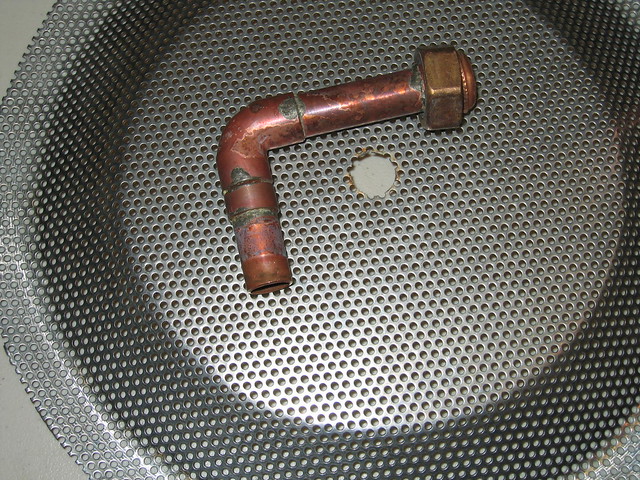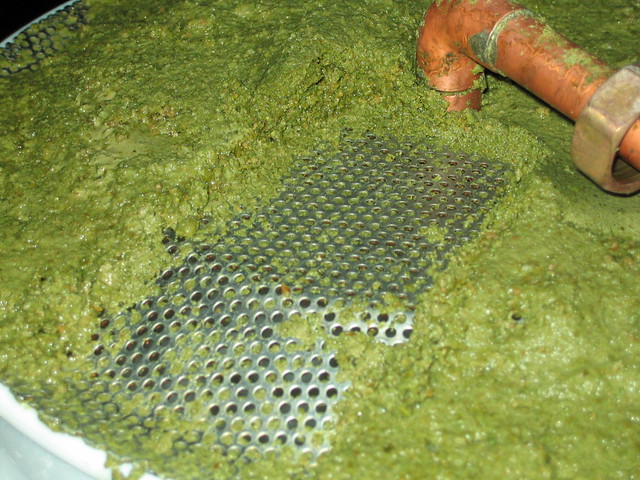surreal_trip
Well-Known Member
Whats the deal... do these work?? are they really helpful??? can i get a plus minus on these suckers... I've done plenty of research but you guys can't seem to get your story straight!

Yes they work, the plate chillers that we use for brewing are really just smaller versions of what the big boys use.
Some are worried about cleaning them but I've yet to have a problem with mine.
do you really need a pump and all the rest of the stuff?
Yeah, you can ask two brewer a question, and get five different opinions..Whats the deal... do these work?? are they really helpful??? can i get a plus minus on these suckers... I've done plenty of research but you guys can't seem to get your story straight!
Yeah, you can ask two brewer a question, and get five different opinions... Using a plate chiller is ok if you like doubling your clean up time and dropping the coins. I speak from experience. I have a Therminator. I backflush like hell, then drop it into a pressure cooker, then bag it to make sure it's ready for the next brew. Often i have to back flush before i can finish the cool down. In a word, it's a PITA.
Yeah, you can ask two brewer a question, and get five different opinions... Using a plate chiller is ok if you like doubling your clean up time and dropping the coins. I speak from experience. I have a Therminator. I backflush like hell, then drop it into a pressure cooker, then bag it to make sure it's ready for the next brew. Often i have to back flush before i can finish the cool down. In a word, it's a PITA.
Have you ever had any infections traceable to your plate chiller?
Yeah, you can ask two brewer a question, and get five different opinions... Using a plate chiller is ok if you like doubling your clean up time and dropping the coins. I speak from experience. I have a Therminator. I backflush like hell, then drop it into a pressure cooker, then bag it to make sure it's ready for the next brew. Often i have to back flush before i can finish the cool down. In a word, it's a PITA.
....does the Counterflow do as well bringing down the temps as a Plate Chiller?
I had a 40 plate chiller from eBay. I couldn't get below 80 even with a slow trickle and 30+ minutes.
I had a 40 plate chiller from eBay. I couldn't get below 80 even with a slow trickle and 30+ minutes. I then went to a 25ft CFC and finally a 50ft 1/2" IC with whirlpool.
Out of all the methods I tried, the 50ft IC with whirlpooling through a pump (aka Jamil's wort chiller) works the best. I get the whole batch below 140 within about 3 minutes and get to pitching temperatures in less than 15 minutes. The own drawback is the size and storage.
The key to a CFC or plate chiller is to get the coolant water as cold as possible. So you will probably need to use ice water and a pre-chiller in the summer.
Now I have changed my mind, because this article makes perfect since to me. I read this link and I can build that so easy. Whole batch needs to be cooled IMO now that I understand it. I have been kicking around what to do, I have a IC. I am going to do this "Whirlpool Immersion Chiller" method.
http://www.mrmalty.com/chiller.php
The thing about plate chillers is that most people make the mistake of both the wort and cooling water flows being to high of a rate. For the plate chiller to effective it needs to take full advantage of the surface area and contact time to achieve the heat transfer. Slow the cooling water speed down and give it a chance to actually pull the heat out of te wort. Running either or both too fast does not give it the time and opportunity to do what the physics wants to do.
There is no performance-related reason to run the cooling water slower (for IC, CFC, or Plate). The only reason to slow the cooling water is if you are "water conscious" and don't want to use/waste as much. The hot wort should be throttled so that it exits at the correct temperature.
One thing I don't see many people recommending (hardly):
If the showdown is plate chiller vs. jamil-o-pool IC, then why not a Jamil-o-plate. Why not recirculate the output of the plate chiller back into the kettle. I hear a 'flaw' of the plate chiller is that the majority of the wort stays at boiling temp too long. Problem solved.
I guess it has something to do with hop blockage, but if you are confident in your screening, then why not. Seems like even better than going straight into the fermenter since you'll leave all the trub/break behind... which seems to be the other argument against plate chillers.
Yeah, you can ask two brewer a question, and get five different opinions... Using a plate chiller is ok if you like doubling your clean up time and dropping the coins. I speak from experience. I have a Therminator. I backflush like hell, then drop it into a pressure cooker, then bag it to make sure it's ready for the next brew. Often i have to back flush before i can finish the cool down. In a word, it's a PITA.
need to screen out the hops while at the same time maintaining a high flow rate.
From my understanding speaking to the Dudadiesel people, the faster the chill water the better. It takes the heat up and on outa dere. The wort should be slow enough to get the desired exit temp, so slow enough to transmit as much heat as needed before exiting.
One thing I don't see many people recommending (hardly):
If the showdown is plate chiller vs. jamil-o-pool IC, then why not a Jamil-o-plate. Why not recirculate the output of the plate chiller back into the kettle. I hear a 'flaw' of the plate chiller is that the majority of the wort stays at boiling temp too long. Problem solved.
I guess it has something to do with hop blockage, but if you are confident in your screening, then why not. Seems like even better than going straight into the fermenter since you'll leave all the trub/break behind... which seems to be the other argument against plate chillers.
EDIT: And you can just use a hose clamp on your line to slow things down. I would hate to have to take apart a ball valve every time I brew just for that purpose. It's the reason I bought a butterfly valve for my boil kettle.
If you necessitate a strong whirlpool. I do not, I just want to recirculate. My drain is at the bottom center, so a strong whirlpool is not so beneficial.
The slower the wort flows through the chiller the closer to chill water temp it will get. I'm sure there is a point at which the slower flow doesn't chill enough wort in recirculation that it would work in the opposite direction re: chilling efficiency.
Recircing with the plate chiller works fine with a Lil Sparky hop bag. I've increased my hops by 10% to account for loss of utilization. Don't know if that was necessary, but I got spooked and really prefer my beers to err on the side of bitterness. I've never had my therminator clog or even slow down.
This is the reason that I have abandoned the paint strainer bag setup in favor of a false bottom in my BK.
A false bottom of what type of material and construction? A typicle falsebottom like the perforated SS mesh I use in my MLT is too large to stop virtually ANY hop gunk. WHat is your BK false bottom made of, Pics?


Here ya go:

I think the holes are the typical size used in most FB's.
I disagree with your claim that a slow wort flow through a chiller is the better way to go when recirculating for the chill. The wort temp may not drop as much with each pass through the chiller, but you will be cooling the entire wort volume more quickly with a faster circulation rate and IMO, that's the whole point of doing the recirculation thing.
Dudadiesel's claim, not mine. I don't own a plate chiller but am trying to determine if it's the way I want to go since I'm unhappy with my IC performance so far.
I think what the guy was saying was if you weren't recirculating, you would have to slow down the wort to attempt to get it to pitching temp in one pass. Asking them to calculate chilling time with a recirculation for my volume to determine the right size chiller for (say) a 10 minute chill prompted sighs and irritation. Guess I'll just have to go with one and check it out.
Enter your email address to join: